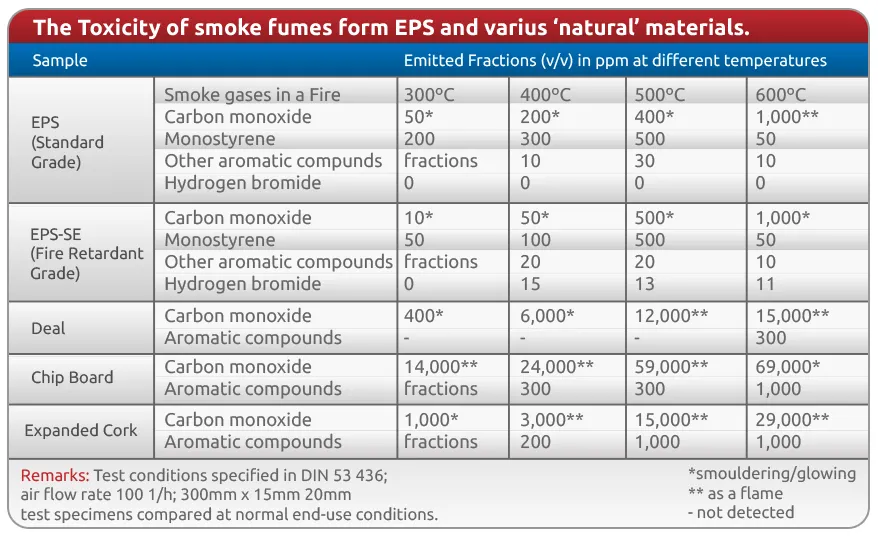We are Manufacturer, Supplier of Fire Retardant, Fire Retardant Chemicals, EPE Foam Sheet & Rolls, Thermocol Block, Thermocol Blocks, Thermocol Sheet, Thermocol Sheets, EPS Thermocol Block, EPS Thermocol Blocks, our set up is situated in Pune, Maharashtra, India
What is Class A Fire Retardant?
It's a great achievement to be the only CLASS A fire retardant EPS manufacturer / supplier in the United Arab Emirates. Our outstanding EPS has been tested according to the International standards (ASTM E84) as per Standard Test Method for Surface Burning Characteristics of Building Materials and the results shows that we have truly invested in understanding our clients' needs and working with them to deliver high quality solutions.
Effect of Heat on EPS
As EPS is heated it softens, and at about 1500 C it begins to shrink. This continues until it is reduced to its original density prior to expansion. Continued heating will melt it to liquid and then a combustible gas will form above 2000 C. This gas can be ignited at temperatures between 3600 C and 3800 C, and will self ignite around 5000 C. When burning, it produces 40 x 45 MW/Kg of heat. Temperatures of this magnitude usually occur only in well developed fires.
Flammability
As with many construction and packaging materials, EPS must be considered combustible. Its fire behavior depends on the type of material and its application conditions. It is important to distinguish between the two commonly used grades of EPS. All EPS used in construction and decoration products contain a Flame Retardant conforming to AS 1366, part 3 - 1992. The flame retardant reduces the flammability and spread of flame on the surface of EPS products, to such an extent that it is classified as "flame retardant" according to the ASTM E84. If ignited with a flame, EPS extinguishes itself as soon as the ignition flame is removed. The flammability of EPS construction products is reduced with surface coatings, such as plaster, and metal cladding as in sandwich panels. Non flame retardant EPS, typically used in packaging, will sustain combustion and the resultant fire spreads at a rate of about 3cm per minute over the surface. This is comparable to other combustible solid materials. EPS does not catch fire spontaneously, and small sources of ignition will not ignite it.



